History of the House / 1930 to 1945 - Sir John Lumsden / Grand-daughter Margery Stratton - 1935-6 / 1. Remembrances of a young American Girl
Previous / Next: 2. Invitation to Howth, Ireland
Remembrances of a young American Girl
Part 1 - Early days
Margery L. Stratton
|
The following was written by Margery L. Stratton. Margery, grand daughter of Sir John Lumsden, was born and brought up in a small town in Pennsylvania in the United States, and spent a memorable year at Earlscliffe in 1935/6. This is her story. |
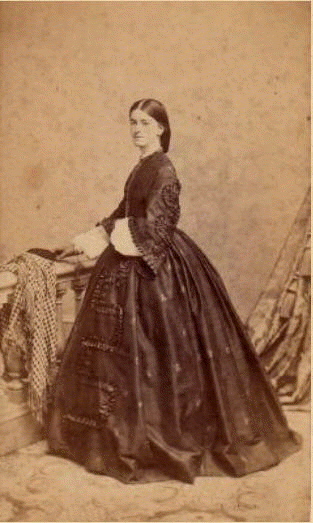
I chose the title REMEMBRANCES OF A YOUNG AMERICAN GIRL because when Agnes Stuart Kingscote was 77 years old she wrote several pages about her memories of life as a Canadian Girl.
Agnes was the mother of my grandmother Caroline Frances Kingscote Lumsden and a few years before her death Agnes set down the story of her early years in Toronto, in those days called York.
Her ancestor, Andrew Stuart, emigrated from County Tyrone, to Pennsylvania in 1730. Andrew was a Presbyterian of “the most rigid faith, probably the Covenanting or Cameronia”. [1] His son, John was born in Lancaster County, Pennsylvania.
While studying at the University of Pennsylvania in Philadelphia, John came under the influence of an Episcopal priest, and feared to tell his father that he was more interested in the Episcopal doctrine than the reformed faith – Presbyterian. He returned to Lancaster County where he taught school for seven years. During those seven years he struggled with his yearning to become an Episcopal priest and confessed to his father this calling. His father surprised him by bestowing his blessing for the “call” to the priesthood.
After graduating from seminary (University of Pennsylvania) John joined Sir William Johnson, in the Mohawk Valley in Eastern New York State where he worked with the Mohawk Indians helping to translate the Book of Common Prayer into the Mohawk language. While living in the Mohawk Valley the dissenters (many of them Presbyterian) declared war on the Mother Country. John was a true Loyalist, was kept under house arrest. Unable to earn a living under those terms he could barely sustain his family. After a few years he was released to travel to Canada if he would send back two American Rebels to the U. S. as exchange for his freedom. Settling in Kingston, Ontario, he remained there for the rest of his life.
Four generations later my great grandmother, Caroline (born January 14, 1877) whose family lived in York (Toronto) the youngest daughter of the third John Stuart. [1] Though I never met Granny “Kingco” as she was called by her grandson, my father, her story came to me from his first cousin, Katharine Potter, of Ramsden, Oxon., England, when she paid us a visit to the U. S. in 1949.
Agnes Stuart’s story is an interesting one and I wish I had known her. When I came to live at Earlscliff in 1935 (it was spelled without the ‘e’ in 1935) Agnes had died but I saw many photos of her and her husband and thought it such an interesting story.
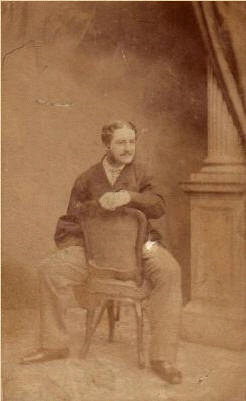
Agnes (born May 2, 1838) was raised by her maternal grandparents. Her mother had run off with another man and Agnes was sixteen before she learned that her mother had not died from consumption but their paths never crossed again. Her father gave her up to his in-laws.
Upon their deaths she was offered a home with her married sisters. It was not a happy situation. After an on and off courtship with Captain Fitzhardinge Kingscote (born March 16, 1837) Agnes agreed to marry him when he was ordered back to England. Fitz had courted her for several years and persuaded her to marry him – a long way from her life in Canada. They were married on July 17, 1863.
Her personal story tells how his parents did not know about their marriage until their arrival in England which was rather a shock to her as well as to them. I learned a bit more of her life story while living with her daughter, my Granny Lumsden. My father, John Fitzhardinge Lumsden, born June 11, 1897 to Dr. John Lumsden and Caroline Kingscote at St. Stephen’s Green, while living with Grandpa’s parents at the time – (Granny was just 19 years old).
Soon after his birth they moved to #4 FitzWilliam Place where Grandpa had his medical practice on the first floor. That place was used as his office until his retirement in the 1940’s. Before Dad’s birth they had employed a young woman of 18 to be the nanny and for some reason they called her “Ninny.” Ninny and the children lived in the Nursery on the top floor and brought the children downstairs every evening before dinner.
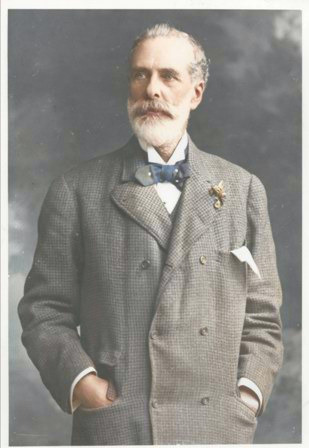
Dad was born June 11, 1897 and followed soon after by sisters: Leslie, born in 1898, Norah in 1900, Margery in 1908 and the twins, Nancy and Betty born in 1911.
The children spent a lot of time visiting with their grandparents (John Lumsden) who lived in Roslyn in Sutton (on Burrow Road) right on the sea.
Grandpa Lumsden’s father, John Lumsden had come from Scotland to work in a bank in Armagh and then to Dublin for the Royal Bank of Ireland. During that time it is said that he was instrumental in bringing golf to Ireland – first in Phoenix Park using cups in holes – later he and his friends found land at Dollymount which is now the Royal Golf Club of Ireland. My son Bill was on a Golf tour of Ireland several years ago and enjoyed playing that course.
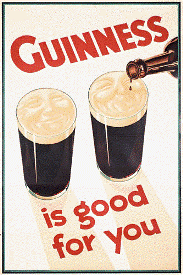
In addition to his Medical practice Dr Lumsden joined the Guinness Brewery as Medical Officer later to become Chief Medical Officer. When he decided to start a chapter of the St. John Ambulance Society employees of Guinness composed that first chapter. The Society grew under his leadership and is now serving every community in Ireland. [2] The administration building for the Society is now called Lumsden House in his honor.
During the Easter Rebellion of 1916 there was much fighting in the streets of Dublin and John Lumsden became a familiar figure as he dashed out carrying a white flag and his medical kit to tend to the wounded on both sides. For these acts and his formation of the St. John Ambulance Society he was knighted for each by King George V.
My father, like many children in Ireland had been sent to England to Rossall School in Fleetwood, just north of Liverpool and Blackpool. In 1914, War was declared with Germany and though Dad was only 17, he came home to Dublin and joined an Irish Regiment to fight the war that would “end all wars.” In 2004 my daughters Wendy Gross and Suzanne Livermore and I visited the school during our visit to the U.K. When the war ended in 1918 Dad, at 21 was suffering from shellshock in battles in Egypt and Palestine; he had earned a battlefield promotion to Captain upon the death of his commanding officer and followed General Allenby as they entered Jerusalem on foot in reverence of their Christian faith.
Dad was not ready to follow in his father’s footsteps by entering Trinity College and becoming a physician; he had met some “Yanks” in his War years, found them so likeable that he was eager to sail to America to seek his fortune in 1920.
John FitzHardinge Lumsden arrived in Philadelphia and found employment with an Automobile Agency and was sent to Detroit to learn more about their manufacture. At home in Ireland he was called “Fitz” but since Fitz could be mistaken for the German name Fritz, he asked his new friends to call him Jack. And though all letters from Ireland addressed him as Fitz he was now called Jack.
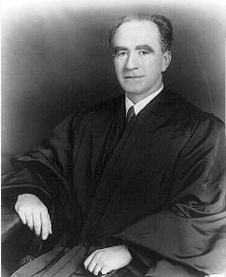
An interesting event occurred while he was in Detroit; he was so close to Canada that one afternoon he decided to cross over and get a package of English cigarettes; unfortunately, he forgot to take his passport. He had no trouble until he tried to return to Detroit and the Immigration Office would not allow him to enter. His sister, Norah, had an American friend whom she had met and dated in Dublin; his name was Frank Murphy and he was then governor of Michigan. So Dad gave his name as a reference and it worked; Governor Murphy identified him as one who was safe to admit and he came back to Detroit. Governor Murphy later became U. S. Attorney General under Franklin D. Roosevelt and ultimately served on the Supreme Court. Frank Murphy never married and with childlike philosophy I was certain that Aunt Norah had broken his heart!
In 1920 Dad, lived in a boarding house in Philadelphia. He had sold a car to my mother’s Aunt Lill and Uncle Charlie Davis who lived in the same house. Whether it was a coincidence or not, or Aunt Lill was a matchmaker, she invited my mother, Dorothy S. Wilson, to dinner at the Boarding House.
Mother, after a year at Wilson College had a job with the Curtis Publishing Company in Philadelphia (famous for its magazine THE SATURDAY EVENING POST) and lived at another Boarding House. Apparently it was love at first sight on Dad’s part; during dinner he suggested that he take them all for a ride in his car and suggested that since it was such a nice evening they drive out to Valley Forge to see her parents.
Two weeks later he proposed! But Grandpa Wilson said, “Absolutely not – you must prove to me that you can support my daughter and get to know one another before I give my blessing.” Grandpa suggested a two-year waiting period agreeing to an engagement with the above provisions.
During that time Mother had a cousin (Colket Wilson who was the age of her parents). Cousin “Tol” wrote to the American Embassy in Dublin to inquire about the family of Dorothy’s intended husband. He received a positive reply but when Mother heard about it she was quite furious.
After the two year period, Dad and my mother Dorothy S. Wilson were married on March 25, 1922. A few years after their marriage Dad decided to leave Auto sales and go into the life insurance business and after a year or so with a small agency he joined the Prudential Insurance Company. He studied at the Wharton School of Finance at the University of Pennsylvania at night. He had found his niche and continued with that company until his retirement in 1968.
They had four children: I was the first child, named for his sister, Margery, Dorothy in 1925, then John (who died of Spinal Meningitis at the age of 19 months). Robert was born in 1930.
Dad had not seen his parents and sisters since he left Ireland in 1920. But letters flowed back and forth and pictures of the family in Ireland gave us a good idea of what life was like in Ireland. Grandpa and Granny had purchased the property on the Hill of Howth called Earlscliff. Four of the five sisters had been married and their wedding photos were exciting to see and lovingly placed in photo albums by my father.
|
• • • • • • |
References
- [1] See "The REV. John Stuart, D.D. of Kingston, U.C. and His Family: A Genealogical Study" (1920) published by Whig Press, Kingston, Ontario, ISBN-10: 0548729964 http://www.amazon.co.uk/REV-John-Stuart-Kingston-Family/dp/0548729964/ref=sr_1_1?ie=UTF8&s=books&qid=1243110150&sr=8-1
- [2] The Goodness Of Guinness" by Tony Corcoran, published in 2005 by Liberties Press ISBN 0-9545335 http://www.amazon.co.uk/Goodness-Guinness-Brewery-People-Dublin/dp/0954533577/ref=asap_bc?ie=UTF8 .
This page was last updated on 29-Jul-2023 .
